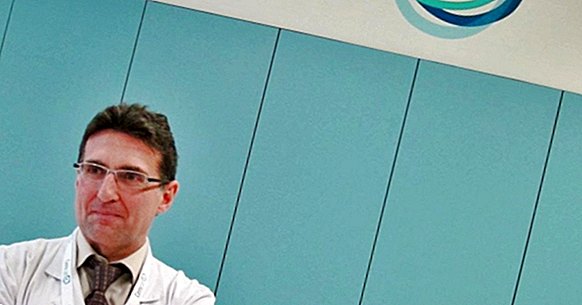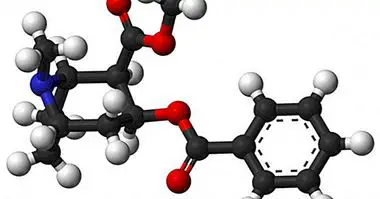First effective drug to delay primary multiple sclerosis
The company Genentech , belonging to Roche Group, communicated on September 27 that the clinical trial, in Phase III, of the experimental drug Ocrelizumab It has been satisfactory.
This medicine manages to delay progression of primary progressive multiple sclerosis (MSD) by at least 12 weeks , in its initial phases. This subtype of multiple sclerosis (MS), which affects approximately 10 or 15% of the population with this disease, is a very aggressive pathology. To date there was no cure or treatment, but this multicenter study (internationally) with Spanish participation, has shown the efficacy of this drug that could become the first and only therapeutic option for patients with this disease.
Until now there was no treatment for EMM
The study of this drug is called Oratory and has been led by the head of the Clinical Neuroimmunology Service of the Vall d'Hebron Hospital and director of the Multiple Sclerosis Center of Catalonia (Cemcat), Xavier Montalbán. In this study we have investigated the efficacy of the drug Ocrelizumab in 732 patients with progressive primary multiple sclerosis and the main conclusion is that it manages to stop, at least 12 weeks, the progression of the disability that causes the disease .
Montalbán wanted to celebrate the discovery and has declared:
"It is a truly historic moment, as it is the first time that a drug is shown to be effective in controlling this type of neurological disease." A window opens to a better understanding and treatment of multiple sclerosis "This medication is a monoclonal antibody designed to selectively attack CD20B + cells that are thought to have a key role in the destruction of myelin and nerves, which causes the symptoms of multiple sclerosis. By binding to the surface of these proteins, Ocrelizumab helps to preserve the most important functions of the immune system.
What is Multiple Sclerosis?
The multiple sclerosis (MS) is a neuroinflammatory disease that affects the central nervous system (CNS), both the brain and the spinal cord . It is not known exactly what causes MS, but this pathology damages myelin, a substance that forms the membrane that surrounds nerve fibers (axons), and facilitates the conduction of electrical impulses between them.
Myelin is destroyed in multiple areas, sometimes leaving scars (sclerosis). These injured areas are also known as demyelination plates. When the myelinated substance is destroyed, the ability of the nerves to conduct electrical impulses from and to the brain is interrupted, and this fact produces the appearance of symptoms such as:
- Alterations of sight
- Muscular weakness
- Problems with coordination and balance
- Sensations such as numbness, itching or stinging
- Problems with thinking and memory
Multiple sclerosis affects women more than men . Its onset usually occurs between 20 and 40 years, although cases have also been reported in children and the elderly. Generally, the disease is mild, but in more severe cases some people lose the ability to write, speak or walk.
In most cases, this disease progresses in outbreaks, but in primary progressive multiple sclerosis, the disability worsens continuously and slowly over the course of months or years, which is why it is considered a serious form of this disease.
Phases of the clinical development of a drug
In order for a drug to be put on sale, a process must be followed to evaluate its efficacy and safety, thus avoiding putting the lives of the people who will consume it at risk. The development of a new drug is long and difficult, because only two or three of 10,000 pharmacological substances come to be marketed .
When the drug has been sufficiently evaluated in in vitro models and in animal studies (preclinical phase), human research begins, which is called clinical trials. Classically, the period of clinical development of a pharmaceutical product is divided into 4 consecutive phases, but which can be superimposed. These are the phases that are part of the clinical trial:
- Phase I : This phase includes the first studies carried out on human beings, whose main objective is to measure the safety and tolerability of the compound. Given the level of risk involved, the number of volunteers is small and the duration of the phase is short.
- Phase II : The risk in this phase is moderate, and its objective is to provide preliminary information on the efficacy of the product and establish the dose-response relationship. Hundreds of subjects are needed and this phase can be extended for several months or years.
- Phase III : This is the phase in which this medicine is found, and it is necessary to evaluate its efficacy and safety in the usual conditions of use and with respect to the therapeutic alternatives available for the indication studied. Therefore, its use in combination with other drugs for several months or years is tested, during which the degree of incidence of the desired and undesired effects is analyzed. These are therapeutic confirmation studies.
- Phase IV : It is carried out after the marketing of the drug to study it again in a clinical context, and to provide more information about its side effects.
After positive results in Phase III of the Ocrelizumab clinical trial, At the beginning of next year the European authorization will be requested to be able to market this medicine . This usually takes about six months. From then on each country will decide if it allows the sale in its territory.



















